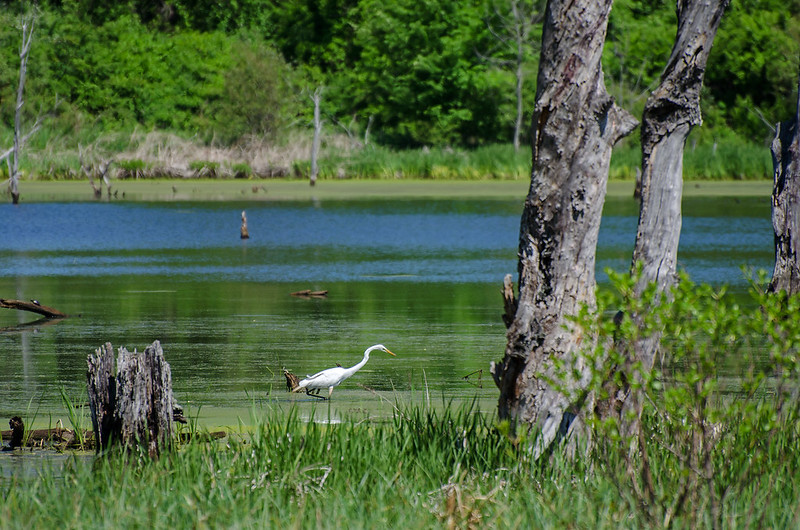
Parallel to the shore of Lake Michigan, this sand dune seems well established - supporting a wide variety of vegetation. Grasses, flowers, shrubs, deciduous trees, and even a small stand of conifers thrive on the dune. The foot of this dune touches the beach, without a prominent fore dune, allowing the crashing waves to reach it during storms. At least once in the past, a storm eroded a portion of the dune, collapsing a large area. You can see evidence of this collapse at the right of the center dune in the photo above.
Without natural sand replenishment, Lake Michigan is slowly eroding away these dunes. Man made structures such as the pier in Michigan City, prevent waves from carrying sand to this beach, so a prominent fore dune has not developed. Without a fore dune, this established dune is threatened by wind and waves.
Dunes a bit closer to Michigan City, near Kintzele Ditch, have all but lost their vegetation on the lake side of the dunes. These dunes are eroding at an alarming rate, as the waves wash away the sand, collapsing the dune, taking mature trees with.
The dunes are an ever changing feature along the shore of Lake Michigan. They've changed every day for the last 4000 years, and won't stop anytime soon.





